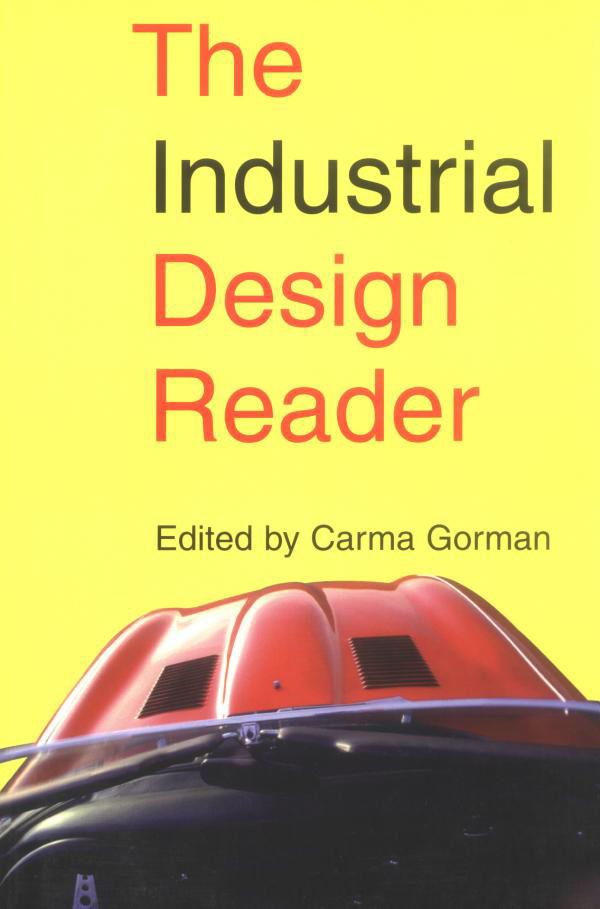The Industrial Design Reader – Edited by Carma Gorman
Article by Martin Gibson – @embody3d @martingibson – 09.08.2010
[rating:4.5]
‘The Industrial Design Reader’ edited by Carma Gorman and published by Allworth Press is a fascinating and authentic anthology of the histories of industrial design. The book is a collection of 60 essays, theories, protests, hypothesises from some of the worlds most renowned and distinguished designers, visionaries, policy makers, theorists and critics of the past 2 centuries.
The orchestration of texts in ‘The Industrial Design Reader’ is cleverly compiled by Gorman as it tells a real complete history of industrial design, not just from a design perspective. Gorman covers all critical bases by including a political, social, technological and environmental context to these events. Whereas I could totally envisage other industrial design histories just talking about how fantastic William Morris’s textile work was.
‘The Industrial Design Reader’ includes a huge scope of work from William Morris’s writings about the Arts and Crafts movement to Nixon’s and Khrushchev’s “kitchen debate”. From Marinetti’s Futurism manifesto to Toyotas “just in time” production strategies. These are all issues that a lot of us ‘know’ about but if someone were to ask us for a more elaborate comprehension we often shrug our heads and say “well you know there’s is this great website called Wikipedia that would have the answer to that one”. But often it is these intricate details that makes histories events just so much more exciting. A whole array of these are touched on including industrialisation and mass production, machines and technology, raw materials, human labor and conditions, craft, aesthetics, management, modernity and the list goes on.
Some chapters include writings by:
- Henry Ford
- Le Corbusier
- Frank Lloyd Wright
- Frederick Winslow Taylor
- Walter Gropius
- R. Buckminster Fuller
- Henry Dreyfuss
- Ralph Nader
- John Ruskin
The first thing you will notice about ‘The Industrial Design Reader’ is that it is very logically structured by having chapters split up into simple 25 year consecutive categories. This disposition makes the rather diverse histories converge really cleanly that will make it of great historical reference on any designers bookshelf. However the books weakness is its lack of editor commentary that could have provided an invaluable analysis and evaluation to these events and how they are related to one another. Because of the cultural diversity of the original authors you really do feel at times a bit jumbled at how the German philosopher Karl Marx and his socialist theories connect to Scottish born designer Christopher Dressers principles of aesthetic decoration; despite being written in the same time period. Although in Gorman’s defence collaborating such an analysis in any kind of coherent fashion would be a life time of work in itself!
For students in particular this book would be most fascinating as it will give a real grounding and justification of why and how you should study and think of design. Although it is not this books intent to make you a better design per se, I think knowing that 250 years ago there was no such thing as mass production and industrial design didn’t exist in its current recognised from could only better inform your current practice. Despite this books irritating and cliche title, ‘The Industrial Design Reader’ is an absolute must read and I commend it to anyone who studies or practices industrial design.



